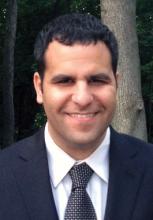Ms. A is a 51-year-old woman with a longstanding history of anxiety and recent loss of functioning because of polyneuropathy and progressive visual loss from years of uncontrolled diabetes. She is highly intelligent and well spoken, and enjoys reading novels, writing poems, and painting. Although Ms. A is no longer able to run her graphic design business, she has been unable to gather the strength to dissolve the business properly. She lives with her elderly aunt and has a home attendant 5 days per week. During her most recent medication management visit, she tearfully states that she feels very lonely and angry and that life seems hopeless.
Helping patients alleviate suffering associated with the loss of social, occupational, and psychological functioning is fundamental to the work we do as clinicians. Understanding and supporting the needs of visually impaired patients are an underappreciated topic deserving more awareness, especially since depression strikes persons with visual loss nearly twice as often as it does the general population (JAMA Ophthalmol. 2013;131:573-81). There is much more discussion about the needs of hearing-impaired patients, partly because of medicolegal concerns surrounding sign language interpreters.
Clinicians need to do a better job of effectively cultivating a greater sense of well-being and agency for patients suffering from visual loss.
In the case described above, Ms. A experienced a variety of emotions – guilt, anger, sadness, and hopelessness – in response to the realization that she had neglected her health for years, resulting in irreparable damage to her eyesight. Over the course of many sessions, Ms. A was given space to grieve the loss. She was open to exploring the negative cognitions that kept her in a state of inertia, putting her at risk of greater harm.
During this process, we elicited the patient’s motivations for enriching her life while problem solving around potential barriers. Using psychoeducation, we explained how unremitted depression amplified her guilt, and how guilt contributes to beliefs that treatment is undeserved. Those cognitions, in turn, can prompt avoidance of treatment altogether. To assuage her feelings of weakness about feeling depressed, we explained the research linking depression and visual loss.
Because Ms. A receives psychopharmacological treatment for depression, along with meds from many other prescribers, we addressed potential pitfalls. Pharmacies do not automatically provide verbal or large print instructions, so we contacted other prescribers and encouraged them to write "low vision" on prescriptions. Knowing that depressed or disabled persons may be reluctant to advocate for themselves, we telephoned her pharmacist in advance. We informed Ms. A that generics are often substituted for one another, so pills change size and shape. For visually impaired persons who rely on tactile cues to distinguish pills, such misidentification can prove deadly!
As a recipient of government-subsidized health insurance, Ms. A was eligible for visiting nursing services to arrange her meds. Patients with commercial insurance or no insurance can access related services through an ophthalmologist’s "low vision evaluation." In our experience, these referrals are not automatic, so contacting relative treaters directly is recommended.
Ms. A. was made aware of The Lighthouse, where volunteers read to the visually impaired, adding a human connection to "talking books." As a self-employed person, she did not need contact with federal Americans with Disabilities services, where visually impaired attorneys offer telephone advice (and inspiration). We deferred referral to Vocational and Educational Services for Individuals with Disabilities for vocational training before she fully mourned her visual loss.
Ms. A. did not volunteer mythical, cultural, or religious beliefs associated with her vision loss, so we inquired directly, since these factors can influence self-acceptance. Oedipus is arguably psychiatry’s best-known myth overall but is hardly the only classical myth about blindness.
"Bulfinchs Mythology" lists several mortals and deities who lost vision, with some gaining extra "insight" after losing sight and being credited with superhuman or prophetic abilities rather than discredited for their deficits. Because Deuteronomy links blindness (and madness) to punishment for sin (Deuteronomy 28:15-68), while the Gospels credit Jesus with healing the blind (Mark 8:22-6; Matthew 9:27-31), we queried her religious beliefs, either current or deep seated, and prepared her for a resurgence of long-forgotten Sunday school teachings under stress.
Ms. A’s interest in the visual arts caused concern in light of her condition, making us wonder whether she would benefit from redirecting her aesthetic interests to music. Appreciating music without sight is easy. There is a long list of renowned visually impaired musicians, including Stevie Wonder, Ray Charles, Art Tatum, Blind Willie McTell, and The Blind Boys of Alabama for starters. However, we chose to focus on established interests before encouraging alternative interests. We alerted her to museums that host "touchable" art shows or arrange annotated gallery tours for the visually challenged.



